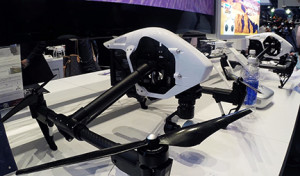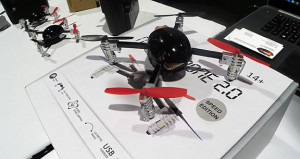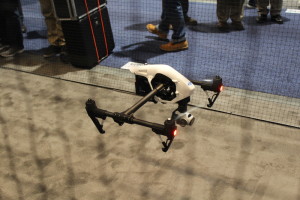
Latest on Aerial Drones and FAA Regulations:
Flying UAV’s (unmanned aerial vehicles), or as they are commonly called, “drones” is certainly  something we do for video as part of our technological current state of capabilities.
something we do for video as part of our technological current state of capabilities.
The views we are able to get from an aerial perspective with cameras that can record 4k video and hi-resolution photos is something that in years past could only be accomplished with expensive jibs or actual helicopters.
After spending time at CES 2015 last week it is obvious that the era of affordable, consumer accessible drones is here. New models and brands were displayed throughout the halls of the Las Vegas Convention  Center and also at the Sands Expo center. Of course the drone market leader, DJI, was there with their models ranging in price from under $1000 into the $10’s of thousand dollar range, but what was more impressive was the dozens of other brands there with models from less than $100 to over $100,000.
Center and also at the Sands Expo center. Of course the drone market leader, DJI, was there with their models ranging in price from under $1000 into the $10’s of thousand dollar range, but what was more impressive was the dozens of other brands there with models from less than $100 to over $100,000.
I suspect that very soon many, many people will have these small UAVs for their personal use as hobbyists. They may become as common as hybrid cars are now. Not everyone will have one but many will.



With this proliferation comes the realization that there is pending FAA rule making and just plain common sense that needs to go into planning for this coming fleet in the sky. With that said there is much confusion as to where aerial drones and FAA regulations stand today.
According to Peter Sachs, Esq. of the Drone Law Journal blog, these have been the FAA’s basic standing guidelines/rules, but not directly enforceable laws:
- Don’t fly above 400ft AGL
- Don’t fly within 3 miles of an airport/landing strip
- Keep your craft within line of sight
- Don’t fly in NOAA zones and obey all TFRs/FRZs (Temporary Flight Restrictions/Flight Restricted Zones)
- Fly safely (not near pedestrians, wildlife, buildings/property, etc. – common sense)
From Jeff’s article, here’s the latest published Interpretation of the Special Rule for Model Aircraft as of June 18, 2014.
A few additional guidelines and descriptions are noted; such as the 3-mile radius from an airport or landing strip is increased to 5 miles (you have to contact the control tower first if you do plan to fly in that range), and they are still trying to lump ALL UAV/UAS into the “under 55lb” category,  including fuel-powered drones and other UAS, not taking into consideration the “under 20lb” multirotors that hobbyists and commercial sUAV pilots are actively using.
including fuel-powered drones and other UAS, not taking into consideration the “under 20lb” multirotors that hobbyists and commercial sUAV pilots are actively using.
Also notice they make special distinctions between hobbyist and commercial operations:
But the FAA seems to be more interested in the commercial use of sUAVs than they are on the overall safety of hobbyist craft, which are the very issues of every reported incident or near-miss to date. While serious, commercial operators are taking care and the necessary precautions to ensure their expensive multirotors and cameras don’t come crashing down. With few exceptions, most commercial sUAV pilots will get training and practice extensively to maintain control of their craft and line up the cameras through FPV monitors to get the shots they need instead of dangerously flying over people and property where there could be a potential for mishap.
shots they need instead of dangerously flying over people and property where there could be a potential for mishap.
To get a complete picture of where the FAA and other entity rule making process is, use the link above to Jeff’s article.
In the meantime, we here at Aardvark Video are perfecting our skills at using UAVs for aerial video, and continue to be amazed at the effective and stunning views we can provide.
Tags: aerial drones, aerial photography, aerial video, ces 2015, uav, Video Production in Las Vegas


